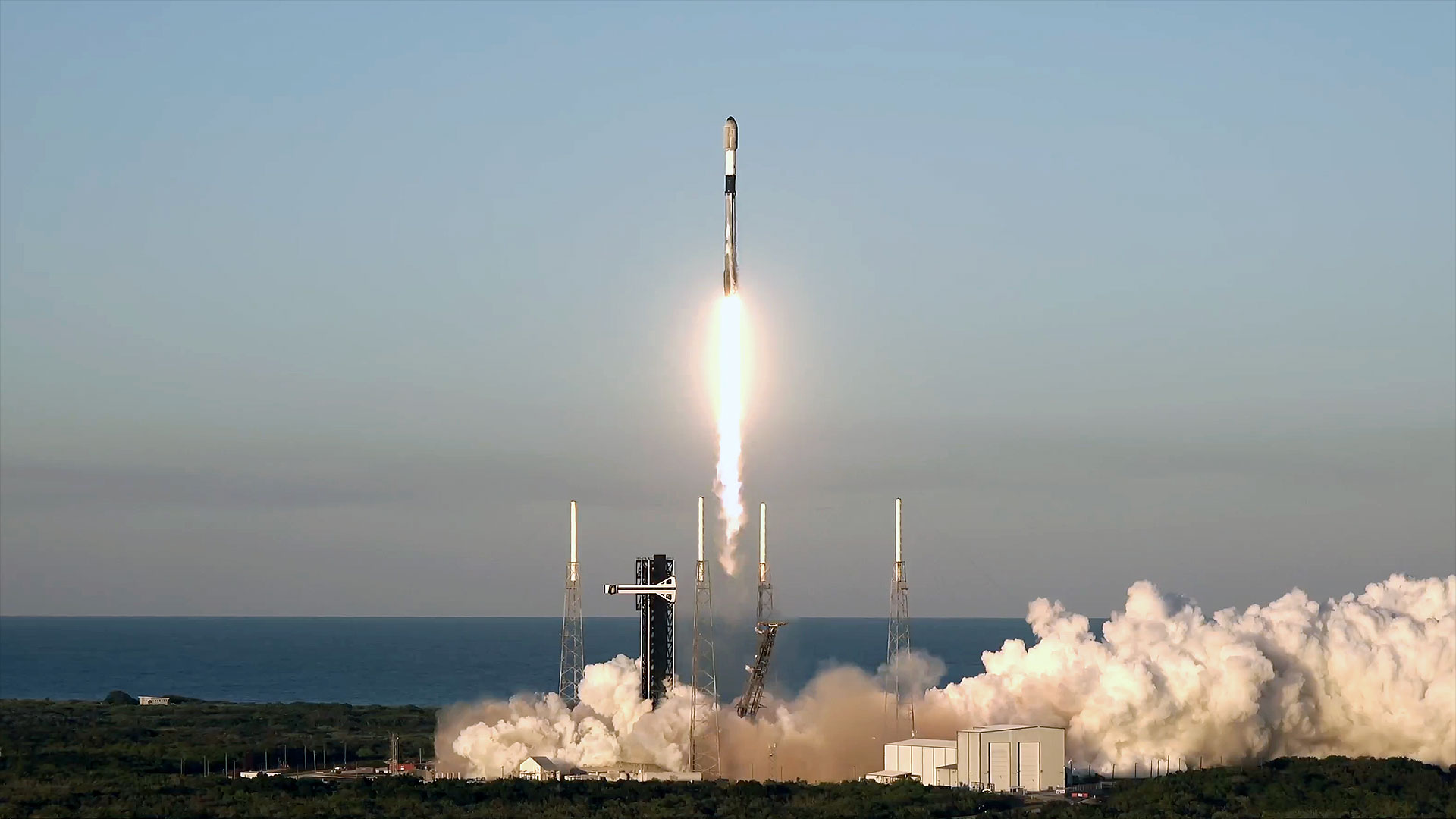Amazing Virgin Galactic Launch Video Shows Black Sky, Blue Earth
You can now ride along with Virgin Galactic at the edge of space. An incredible new video shows footage from the SpaceShipTwo-class suborbital rocket VSS Unity launching from its carrier aircraft, WhiteKnightTwo.
With a mountain range below, Unity lights up its engines. A few frames later, the spacecraft soars into a black sky, the curve of the Earth underneath it. Unity clocked a peak altitude of 55.87 miles (89.9 kilometers), which is slightly above the U.S. Air Force's defined boundary of space — the second time a Virgin Galactic spacecraft has surpassed that boundary.
In the video Unity slowly rotates against the black backdrop of space, displaying black-outlined diagrams of several airplanes and space planes along its hull.
"Welcome to space," one of the two pilots says. In addition to pilots Dave Mackay and Michael "Sooch' Masucci, a third Virgin Galactic staff member, Beth Moses, was also on board. Moses is the company's chief astronaut instructor and served as the company's first test passenger.
"Welcome to the club, astronauts," says one of the ground controllers.
Part of the flight's purpose was to provide more data about how the human body adapts to space during SpaceShipTwo flights, and how passengers feel. Unity also carried four NASA payloads, with the aim of studying data such as dust particles, payload vibration and liquid/gas interactions.
Unity's Feb. 22 voyage brought it to a maximum altitude some 4.4 miles (7 km higher) than its historic flight of Dec. 13, which was the first time Virgin Galactic breached the Air Force's space boundary. However, both spaceflights' ascent was well short of the Kármán Line of 62 miles (100 km) that the International Astronautical Federation considers to be the beginning of space.
Breaking space news, the latest updates on rocket launches, skywatching events and more!
Hundreds of potential space tourists have already claimed a spot for suborbital flights aboard Virgin spacecraft, paying $250,000 apiece for the privilege. Entrepreneur Richard Branson, who founded the company, said he hopes to fly for the first time on July 16, 2019 — the 50th anniversary of Apollo 11's launch of three humans to the moon.
- Virgin Galactic's Historic Space Trip Heralds a Coming Age of New US Human Spaceflight Leaps
- Virgin Galactic's Richard Branson Looks Ahead to Beginning Commercial SpaceShipTwo Flights
- In Photos: Virgin Galactic's SpaceShipTwo Unity Soars to Space in 4th Powered Test
Follow us on Twitter @Spacedotcom and on Facebook.

Elizabeth Howell (she/her), Ph.D., was a staff writer in the spaceflight channel between 2022 and 2024 specializing in Canadian space news. She was contributing writer for Space.com for 10 years from 2012 to 2024. Elizabeth's reporting includes multiple exclusives with the White House, leading world coverage about a lost-and-found space tomato on the International Space Station, witnessing five human spaceflight launches on two continents, flying parabolic, working inside a spacesuit, and participating in a simulated Mars mission. Her latest book, "Why Am I Taller?" (ECW Press, 2022) is co-written with astronaut Dave Williams.
